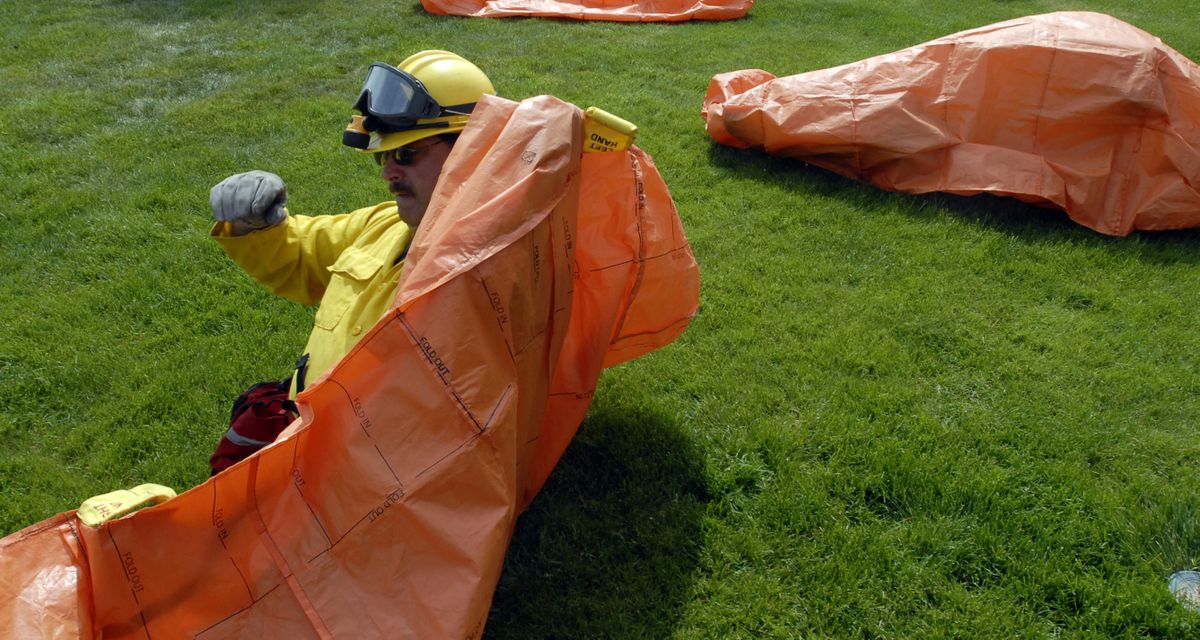Preparing for fire season
Training puts focus on safety, strategies for battling wildfires

With the arrival of summer weather, wildfires may not be far behind and Spokane Valley firefighters plan to be ready.
They spent three days recently honing their skills and making one portion of the city less susceptible to fires such as the one that destroyed 11 homes last July in the Valleyview area.
“Live-fire” exercises cleared out low-lying vegetation that could fuel a large wildfire while keeping the Spokane Valley Fire Department on its toes.
Battalion Chief Wayne Howerton said the department’s controlled burning in the White Tail Ridge area, near State Route 27 and 40th Avenue, was “a huge tool for keeping what happened in Valleyview from happening here.”
The goal was to reduce fuels on four to five acres of undeveloped land where owner Johnny Humphreys plans to build houses.
“We’re trying to help him out, and he’s helping us a lot,” Capt. Jon Sprague said. “If a fire gets going here, it’s not going to have anywhere near the speed and intensity of the Valleyview fire.”
To ensure the practice fires didn’t get out of hand, firefighters kept in touch with the National Weather Service and used portable meters to monitor humidity, wind speed and direction, and temperature. They cut off low-hanging tree limbs and chopped down trees that created special hazards.
Firefighters also dug fire lines before starting their practice fires, and set the fires at the top of hills. Fires tend to race uphill, but they go slowly on their way down.
The drills satisfied state and federal requirements for annual refresher courses on wildfire-fighting techniques, proper behavior and use of emergency shelters. Special emphasis was given to chainsaw safety, Howerton said.
Firefighters also practiced using new radios that allow local, state and federal agencies to communicate on the same channels. They set up portable repeater stations to make sure the hand-held radios remained in contact.
Some officers also learned to use a Spokane County Department of Emergency Services communications trailer that has been assigned to the Spokane Valley Fire Department because of high wildfire danger in the department’s territory. The department is responsible for maintaining the trailer, but it may be used wherever it’s needed in the county.
The communications trailer can leave Spokane County only if officials are satisfied it won’t be needed locally. The next-nearest such trailer is in Clark County.
Part of the Spokane Valley exercise was to work on a “triage” system in which buildings are classified as red, yellow or green according to the chances of saving the structure in the event of a major fire.
“Everything around here that’s even remotely at risk, we have triaged,” Sprague said.
A green structure is likely to survive with little effort from firefighters while a yellow one would require some work before a fire reaches it. Firefighters might spray a yellow home with foam or clear away a small amount of fuel such as a stack of firewood, Howerton said.
A red structure is one that probably can’t be saved no matter what firefighters do.
“It doesn’t mean we’re going to write it off,” Sprague said.
However, if their backs are against the wall, firefighters will try to save the largest number of structures regardless of value.
“We’re going to allocate resources where they’re going to do the most good,” Sprague said. “Safety comes absolutely first. If we can’t get in and out safely, we’re not going to go in there.”
He said property owners are notified of triage designations and given a chance make their homes less vulnerable to fire.
“If they go ahead and clean it up, we’ll go back and reassess it,” Sprague said.
One of his roles in the training was to prepare an “incident action plan,” a small booklet with all the maps, charts and other information team leaders need to marshal their equipment and personnel.
Sprague’s plan for the White Tail Ridge exercise was like a computer version of a television game show, with the computer supplying fictitious players to round out the competition.
Firefighters found themselves working with Bob Marley’s Phantom Crew, Bad Boy Logging bulldozer operator Paul Bunyan, photographer Ansel Adams and his crew of Imaginary Hotshots, and a Rip-R-Up Paving crew led by Rush drummer Neil Peart.
Sprague, who prepares action plans for major fires around the region, also makes up emergencies to test firefighters’ reactions during drills.
If firefighters behave themselves, they might expect nothing worse than a snake bite or a broken leg requiring a helicopter evacuation.
Once, though, “a guy dared me, so I gave him an engine rollover,” Sprague recalled.
The fire engine driver was in a lot of pain from a fractured shoulder, another firefighter was unconscious with a head injury after being thrown out of the engine, and a 67-year-old firefighter had a sore foot.
Sprague said the mouthy student suggested a Band-Aid for the guy with the sore foot, so the fictitious firefighter was in full cardiac arrest 30 seconds later.
“Don’t mess with the guy with the radio,” Sprague said.